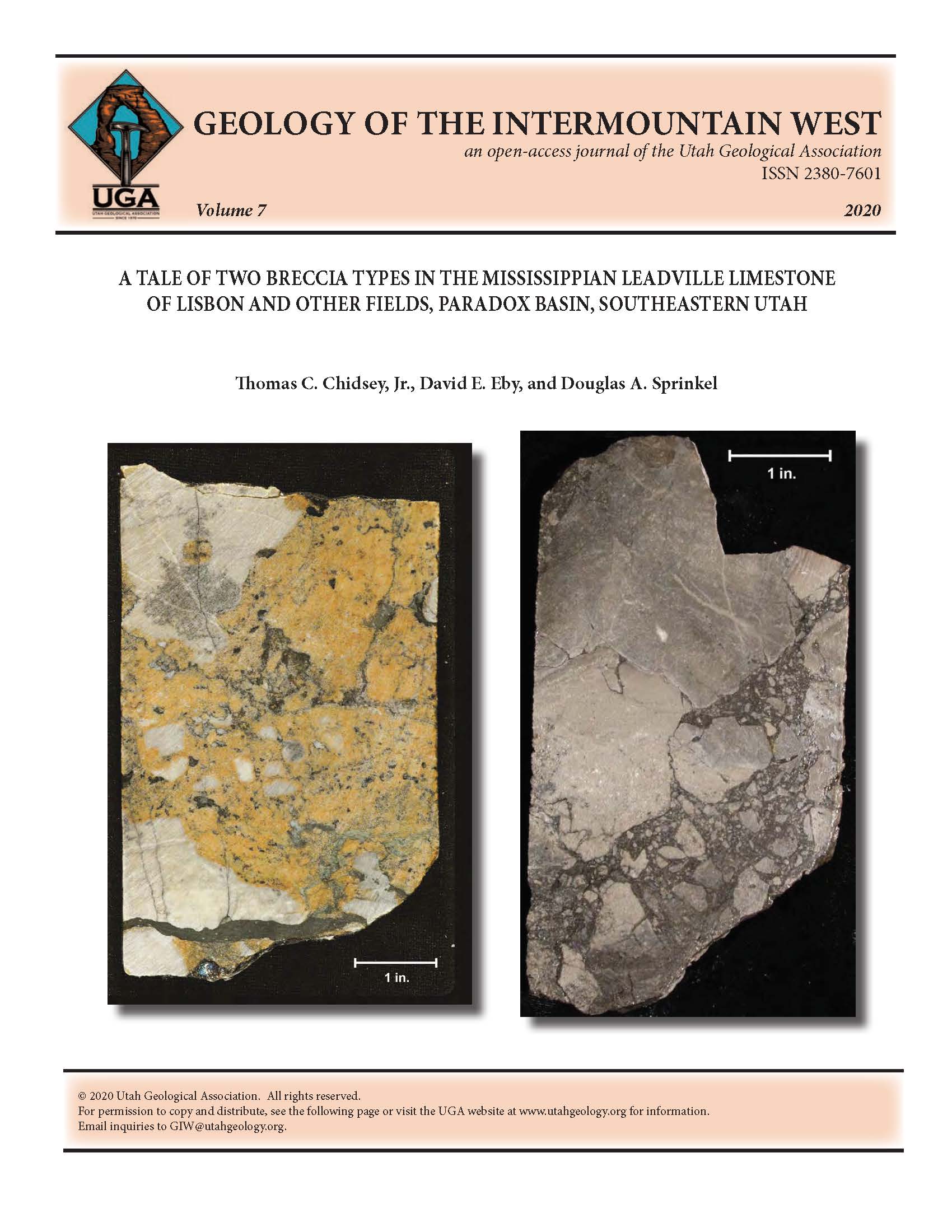A tale of two breccia types in the Mississippian Leadville Limestone of Lisbon and other fields, Paradox Basin, southeastern Utah
Abstract
Two types of breccia are found in the Mississippian Leadville Limestone, Paradox Basin, southeastern Utah: (1) breccia associated with karstification and (2) breccia created by natural hydrofracturing, i.e., “autobreccia.” Breccia associated with sediment-filled cavities is relatively common throughout the upper one-third of the Leadville Limestone in Lisbon and other Paradox Basin oil and gas fields. These cavities and/or cracks are relat-ed to karstification of exposed Leadville during Late Mississippian time. Infilling of cavities by detrital carbon-ate and siliciclastic sediment occurred before deposition of the Pennsylvanian Molas Formation or Hermosa Group. Transported material consists of poorly sorted detrital quartz and feldspar grains, chert fragments, as well as clasts of carbonate and clay. Carbonate muds infilling karst cavities are very finely crystalline non-po-rous dolomites. Post-burial brecciation, caused by natural hydrofracturing, is also quite common within Leadville reser-voirs at Lisbon and other fields. Brecciation created an explosive-looking, pulverized rock, an “autobreccia” as opposed to a collapse breccia. Clasts within autobreccias remained in place or moved very little. Dolomite clasts are commonly surrounded by solution-enlarged fractures partially filled with coarse rhombic and late saddle dolomites. Areas between clasts exhibit good intercrystalline porosity and microporosity or are filled by dolomite cements. Intense pyrobitumen lining of pores was concurrent with, or took place shortly after, brecciation. The presence of zebra dolomites and zebra vugs attest to high temperatures associated with natural hydrofracturing. Rimmed microstructures or stair-step fractures are present, reflecting shear and explosive flu-id expulsion from the buildup of pore pressure. Abundant pyrobitumen makes porous breccias and dolomites look like black “shales.” Post-burial breccias are associated with the best reservoir development at Lisbon field. Outcrop analogs for both breccia types are present in the stratigraphically equivalent Mississippian section along the south flank of the Uinta Mountains in northeastern Utah. Based on field observations, a key com-ponent for autobrecciation is the presence of an underlying aquifer that serves as a conduit for hydrothermal fluids. Large volumes of water throughput are required to produce brecciation and the amount, type, and gen-erations of dolomite present at Lisbon field. We propose a model where convection cells bounded by base-ment-rooted faults transfer heat and fluids possibly from crystalline basement, Pennsylvanian evaporites, and Oligocene igneous complexes. Post-burial brecciation often results in the formation of large, diagenetic hydro-carbon traps.





